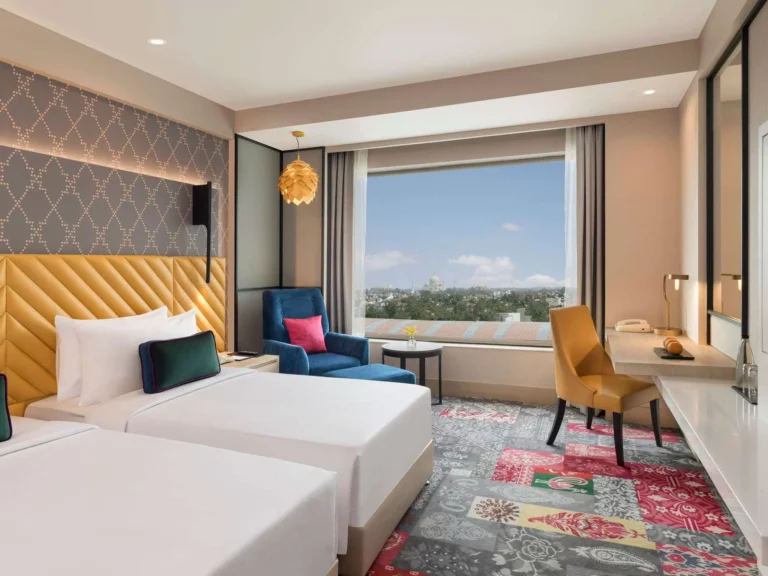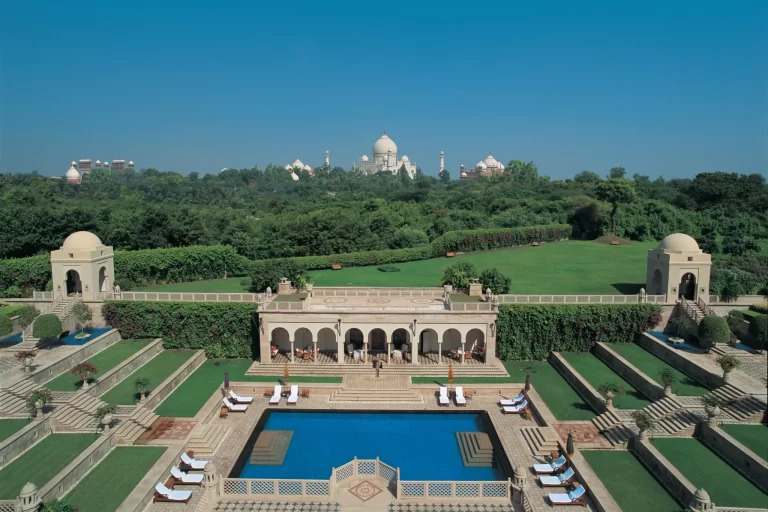Fatehpur Sikri (the City of Victory) is considered something of a romantic enigma, built by the great Mughal Emperor Akbar on the edge of the fertile Yamuna basin on a rocky ridge during the second half of the 16th century in honour of Saint Shaikh Salim Chishti, a Sufi saint who Akbar revered. In 1571, he ordered the construction of buildings for his own use and asked his noblemen to build houses for themselves. Within a year, most of the work was completed and in the next few years a well-planned city with a mix of administrative, secular, residential and religious buildings came into existence. The city served as Akbar’s capital from 1571 to 1585, before the Mughal capital was shifted to Lahore, and subsequently Agra.
The complex of monuments and temples, are all built in a uniform architectural style and include one of the largest mosques in India, the Jama Masjid. Among the important edifices, the tomb of Shaikh Salim Chisti, Naubat or Naqqar Khana (drum-house), Taksal (mint), Karkhanas (royal workshop), Khazana (treasury), Hakim’s quarters, Diwan-i-Am (hall of public audience), house of Maryam also called Sunahra Makan (Golden House), palace of Jodh Bai, Birbal’s house, etc., are noteworthy. The exact purpose and ownership of some of the palaces is still being debated and researched by historians.
Although its prominence in Mughal empire gradually faded in later years, the evocative red sandstone palaces, court buildings, royal baths and mansions of the noblemen of court remain in excellent condition even today, allowing visitors to imagine royal life here in bygone days.



